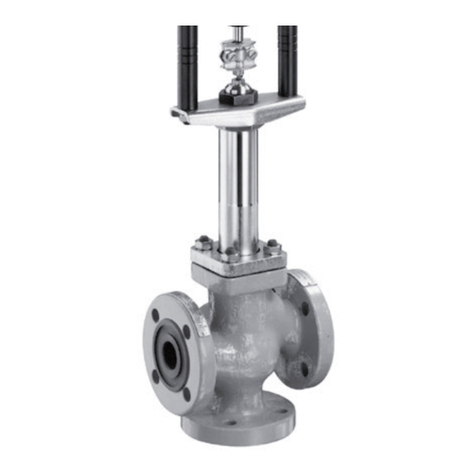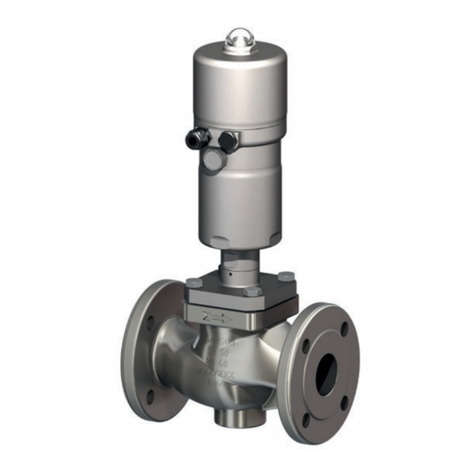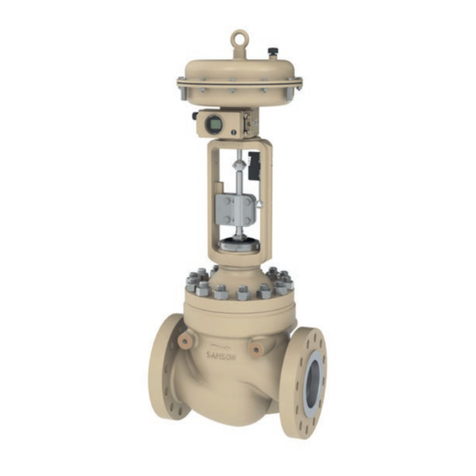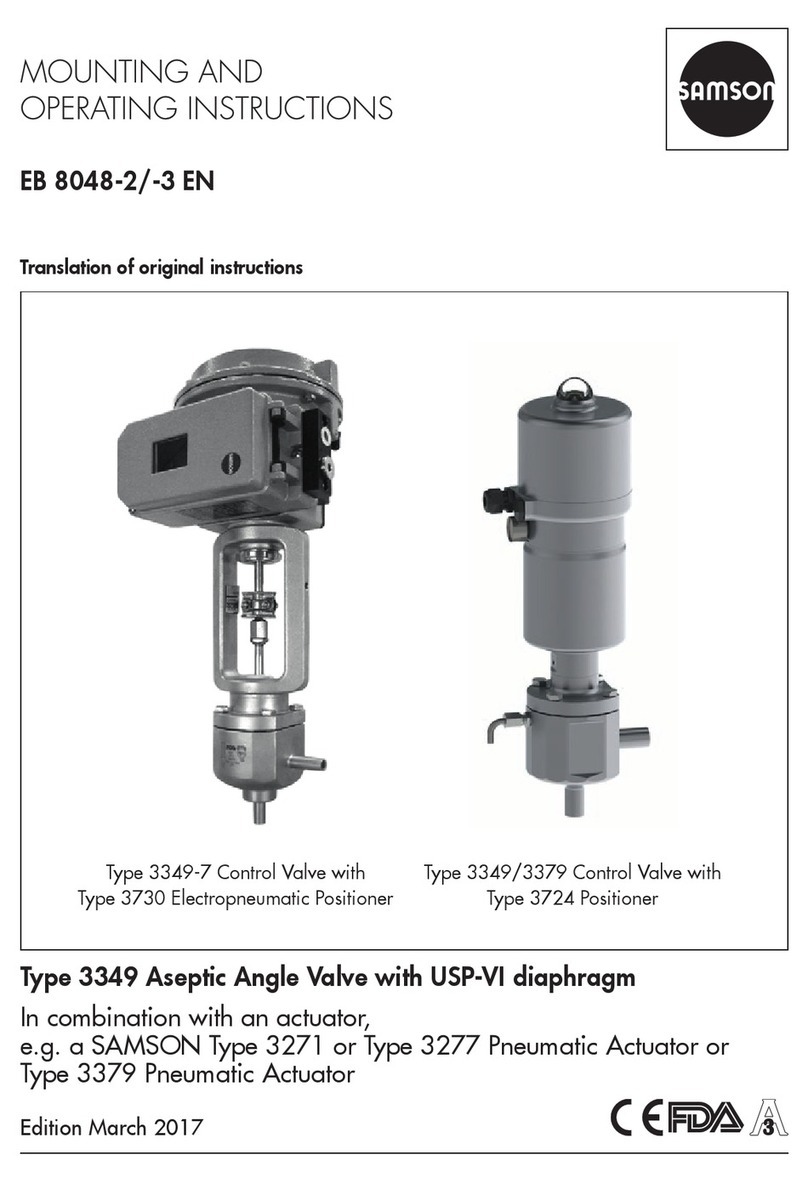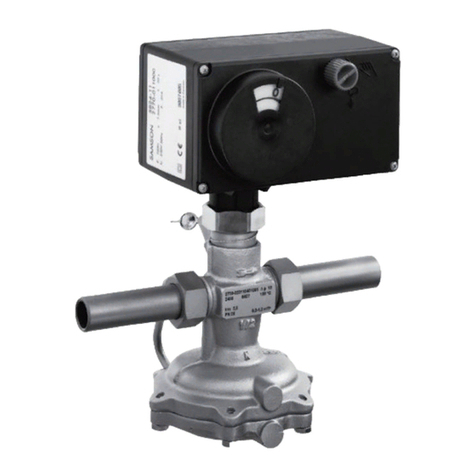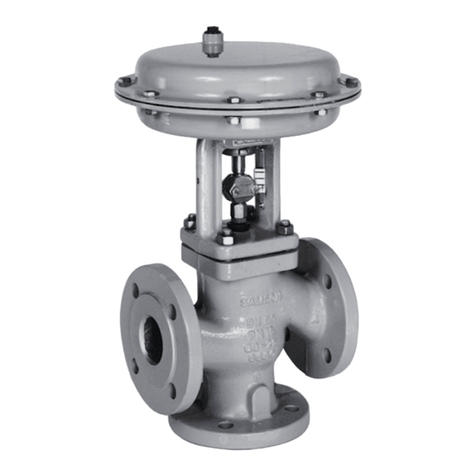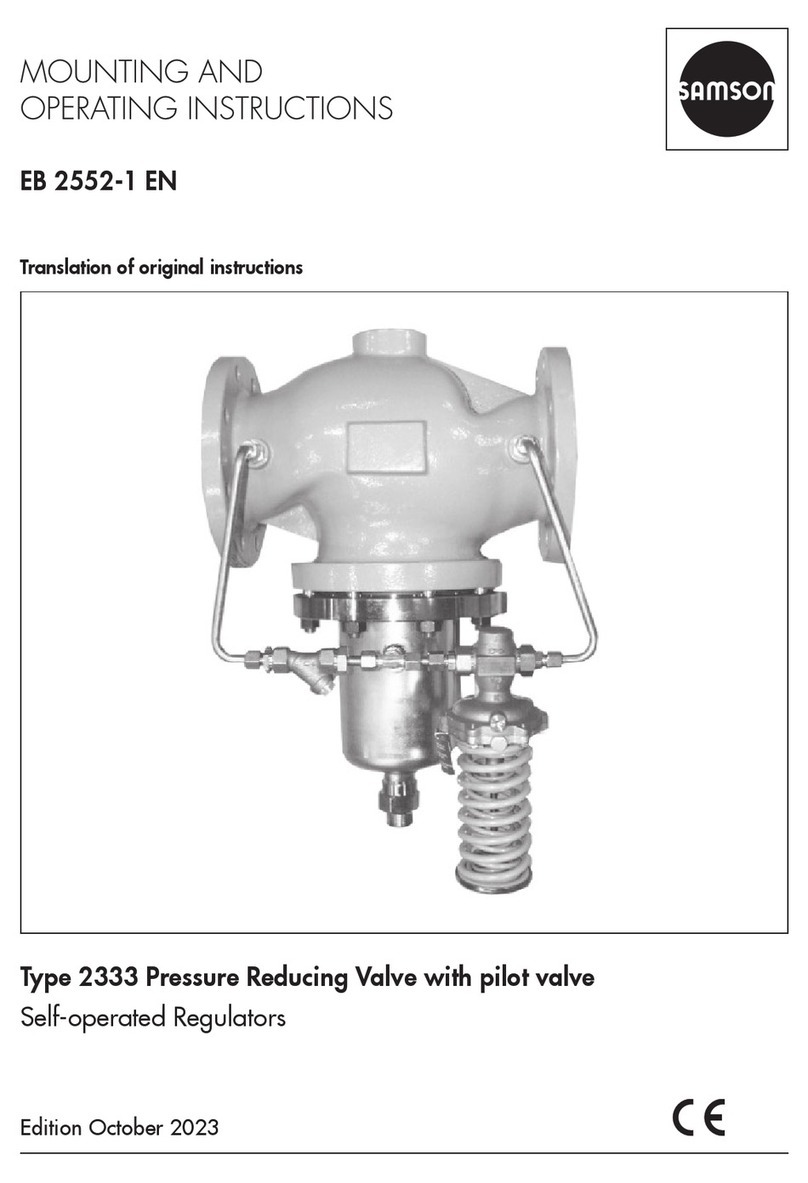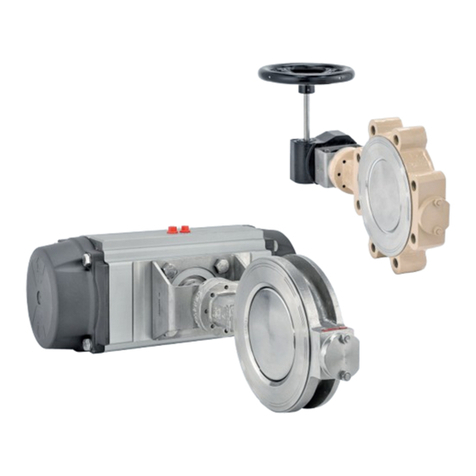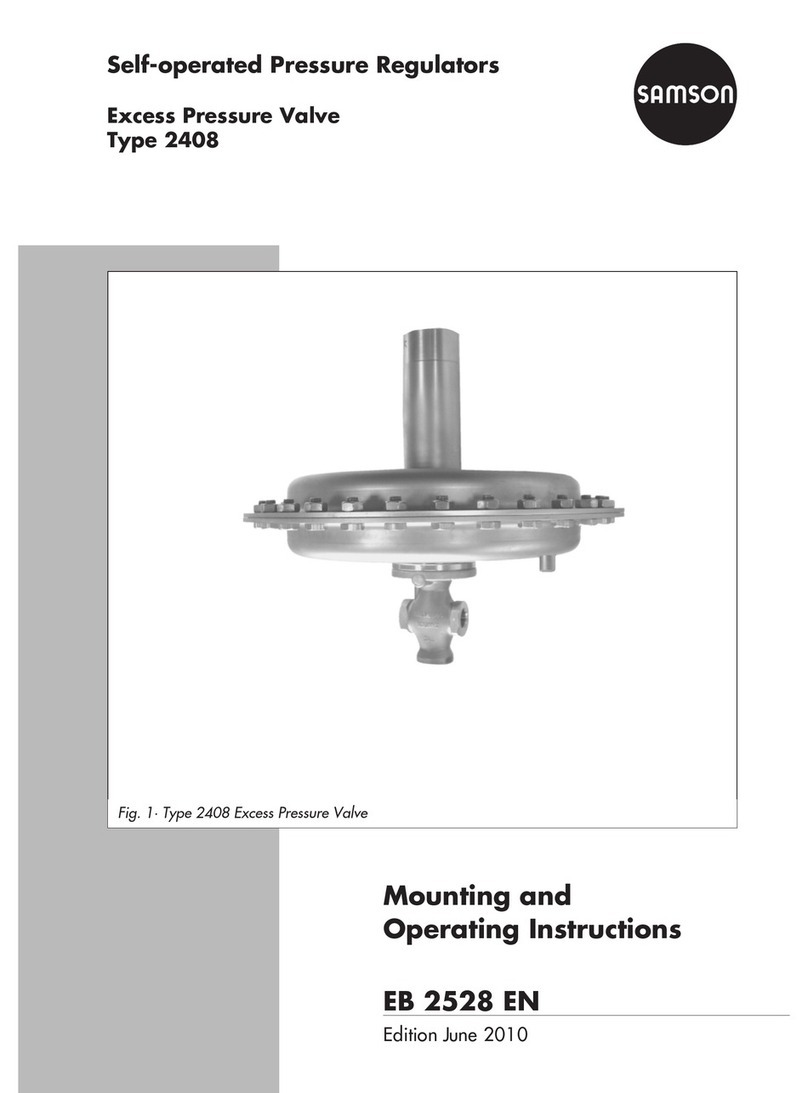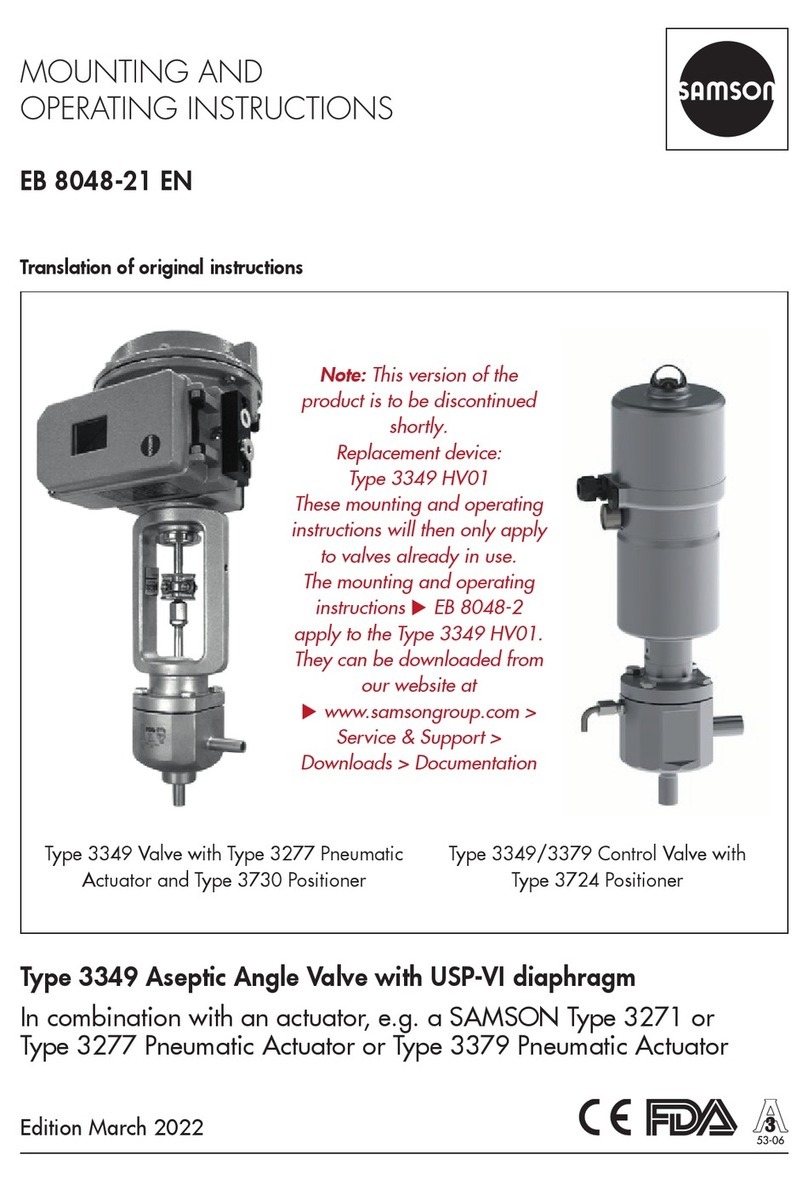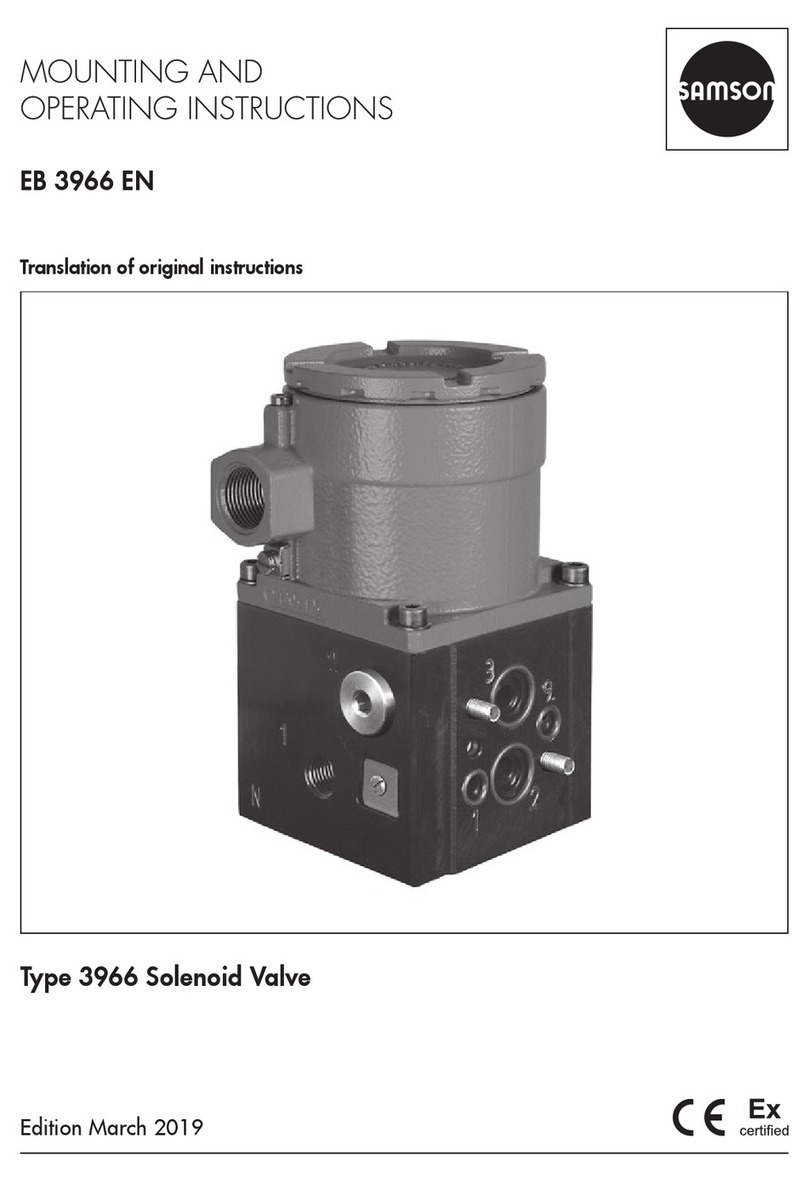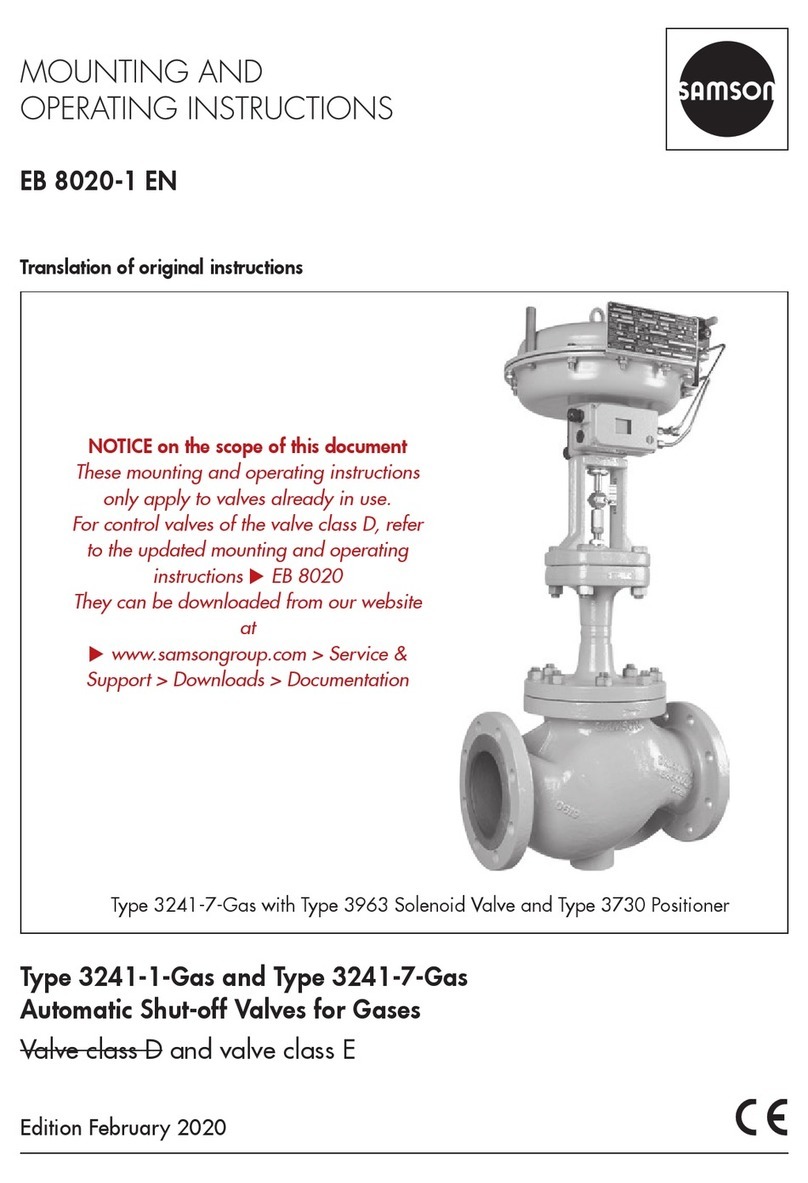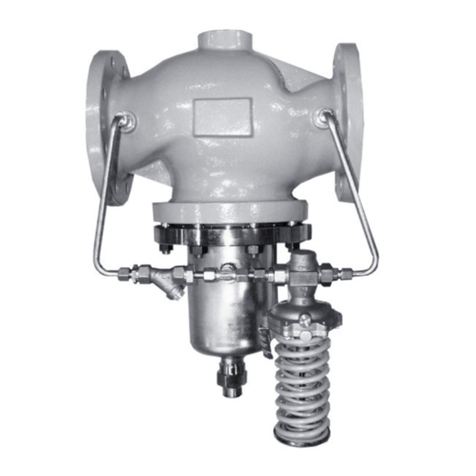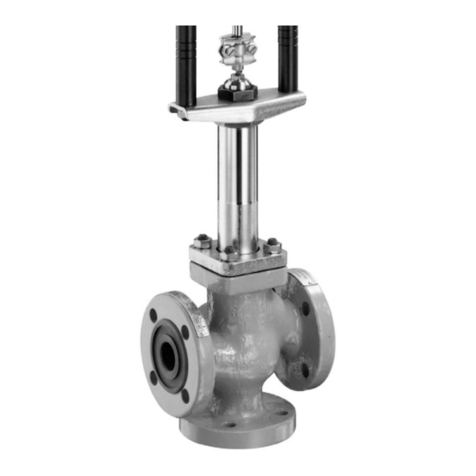
1-1
EB|14t_EN
June 2023 edition
Subject to technical changes
Safety instructions and safety measures
1 Safety instructions and safety measures
Intended use
The control and shut-off butterfly valve type BR14t-LTR43 is de-
signed for use in combination with an actuator for the regulation
of the volume flow, pressure and temperature of fluid, gaseous or
vaporous media.
−The butterfly valve and its drive are designed for precisely
defined conditions (e.g. operating pressure, utilised medium,
temperature).
Therefore the operator must make sure that the butterfly valve
is only used when the conditions of use comply with the de-
sign criteria defined in the order.
If the operator would like to use the butterfly valve in other
applications or environments, they must contact PFEIFFER.
−PFEIFFER shall not be held liable for damage that result from
non-compliance with the intended use, as well as for damage
that results from external forces or external influences.
−Limits of use, areas of use and possible uses can be found in
the technical data and on the type plate.
Reasonably foreseeable misuse
The butterfly valve is not suited for the following areas of use:
−Use outside of the technical data and the limits defined by the
design.
−Use outside of the limited defined by the attachments installed
on the butterfly valve.
Furthermore, the following activities are considered unintended
use:
−Use of third-party spare parts
−Performance of maintenance and repair work that is not de-
scribed
Qualification of operating personnel
The butterfly valve may only be installed in observance of the
recognised rules of technology, commissioned, serviced and re-
paired by specialist personnel.
−Specialist personnel in terms of this installation and operating
manual are persons who, on the basis of their vocational ed-
ucation, knowledge and experience and knowledge of the
relevant standards, are capable of evaluating the assigned
tasks and identifying possible hazards.
−In the case of valves with an explosion-protection version,
personnel must have been trained or instructed or be author-
ised to work on explosion-protected devices in plants at risk
of explosion.
Personal protective equipment
PFEIFFER recommends obtaining information regarding the haz-
ards resulting from the medium in use, for example using the
GESTIS substance database.
Depending on the medium that is used and/or the respective ac-
tivity, the following protective equipment, among others, may be
necessary:
−Protective garments, protective gloves and eye protection
when using hot, cold, aggressive and/or corrosive media
−Hearing protection when working in the vicinity of the butter-
fly valve
−Industrial safety helmet
−Safety harness, if there is a danger of falling (e.g. if working
unsecured at a height)
−Safety shoes, e.g. with protection against static discharge
−Request additional protective equipment from the plant oper-
ator.
Changes and other modifications
Changes, conversions and other modifications to the valve are
not authorised by PFEIFFER. They are made at your own risk and
can lead to safety risks, for example, that cause the valve to no
longer fulfil the prerequisites required for its use.
Protective devices
If the butterfly valve switches to a defined fail-safe position when
the pneumatic energy fails, it depends on the utilised butterfly
valve, see the corresponding actuator documentation. In the case
of combinations of a butterfly valve with single-acting actuators,
the butterfly valve automatically switches to a certain fail-safe po-
sition in case of a pneumatic energy failure, see Chapter 3. The
fail-safe position corresponds to the effective direction and is in-
dicated on the type plate.
Warning of residual risks
To prevent personal injury or property damage, the operator and
operating personnel must use suitable measures to prevent the
hazards that can result from the flow medium and operating
pressure as well as the signal pressure and moving parts.
−Therefore, the operator and operating personnel must ob-
serve all the hazard information, warning information and
information in this installation and operating manual.
−Hazards that result from the specific work conditions at the
area of butterfly valve use must be determined in an individu-
al risk assessment and made avoidable by corresponding in-
structions from the operator.
Obligation of the operator to exercise diligence
The operator is responsible for proper operation as well as com-
pliance with the safety regulations.
−The operator is responsible for providing operating personnel
with this installation and operating manual as well as the ap-
plicable documents and to provide instructions on proper op-
eration.
−Furthermore, the operator must ensure that operating person-
nel and third parties are not endangered.
−The operator is responsible that the limit values for the valve
defined in the technical data are not undershot or exceeded.
